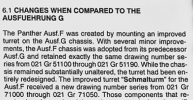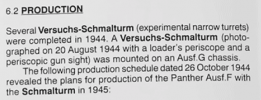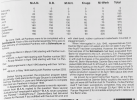Install the app
How to install the app on iOS
Follow along with the video below to see how to install our site as a web app on your home screen.
Note: This feature may not be available in some browsers.
You are using an out of date browser. It may not display this or other websites correctly.
You should upgrade or use an alternative browser.
You should upgrade or use an alternative browser.
Neuvostoliiton ja Varsovan liiton (sekä muiden) tuotantomääristä
- Viestiketjun aloittaja Antares
- Aloitus PVM
Antares
Respected Leader
Saksan Panzerkampfwagen V Panther Ausf. D / PzKpfw V Ausf. D tuotannosta toisen maailmansodan aikana.
Lähde:
Germany’s Panther Tank: The Quest for Combat Supremacy - Thomas L. Jentz, Hilary L. Doyle - 1995
Lainaus ja taulukko löytyvät kirjan sivulta 28.
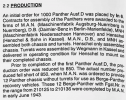

-
Saksan Panzerkampfwagen V Panther Ausf. A / PzKpfw V Ausf. A tuotannosta toisen maailmansodan aikana.
Lähde:
Germany’s Panther Tank: The Quest for Combat Supremacy - Thomas L. Jentz, Hilary L. Doyle - 1995
Lainaus kirjan sivulta 56.
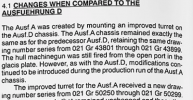
Lainaus ja taulukko löytyvät kirjan sivulta 60.
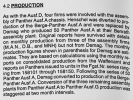
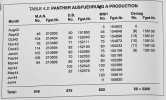
Lähde:
Germany’s Panther Tank: The Quest for Combat Supremacy - Thomas L. Jentz, Hilary L. Doyle - 1995
Lainaus ja taulukko löytyvät kirjan sivulta 28.


-
Saksan Panzerkampfwagen V Panther Ausf. A / PzKpfw V Ausf. A tuotannosta toisen maailmansodan aikana.
Lähde:
Germany’s Panther Tank: The Quest for Combat Supremacy - Thomas L. Jentz, Hilary L. Doyle - 1995
Lainaus kirjan sivulta 56.

Lainaus ja taulukko löytyvät kirjan sivulta 60.


Viimeksi muokattu:
Antares
Respected Leader
Saksan Panzerkampfwagen V Panther Ausf. G / PzKpfw V Ausf. G tuotannosta toisen maailmansodan aikana.
Lähde:
Germany’s Panther Tank: The Quest for Combat Supremacy - Thomas L. Jentz, Hilary L. Doyle - 1995
Lainaus kirjan sivulta 83.

Lainaus kirjan sivuilta 86 ja 88.
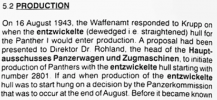
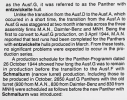
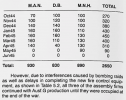
Taulukko löytyy kirjan sivulta 89.
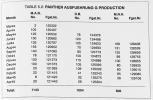
Lähde:
Germany’s Panther Tank: The Quest for Combat Supremacy - Thomas L. Jentz, Hilary L. Doyle - 1995
Lainaus kirjan sivulta 83.

Lainaus kirjan sivuilta 86 ja 88.



Taulukko löytyy kirjan sivulta 89.

Viimeksi muokattu:
Antares
Respected Leader
Viimeksi muokattu:
Antares
Respected Leader
Saksan Panzerkampfwagen V Panther / PzKpfw V (27.2.1944 jälkeen PzKpfw Panther) panssarivaunujen tuotannosta yleisesti toisen maailmansodan aikana sekä kuukausituotantomäärät.
Lähde:
Germany’s Panther Tank: The Quest for Combat Supremacy - Thomas L. Jentz, Hilary L. Doyle - 1995
Lainaukset kirjan sivuilta 118 -120.
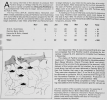

(kuukausien kokonaismäärien summa = 1 904 kpl)
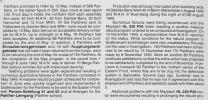
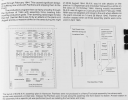

(taulukon summat: "monthly goal" = 6 725 kpl, "Accepted by inspector" = 5 984 kpl - huomaa taulukon tähdellä merkityt poikkeukset, summa laskettu toukokuun 1944 numerosta 324 kpl eteenpäin)
Lähde:
Germany’s Panther Tank: The Quest for Combat Supremacy - Thomas L. Jentz, Hilary L. Doyle - 1995
Lainaukset kirjan sivuilta 118 -120.


(kuukausien kokonaismäärien summa = 1 904 kpl)



(taulukon summat: "monthly goal" = 6 725 kpl, "Accepted by inspector" = 5 984 kpl - huomaa taulukon tähdellä merkityt poikkeukset, summa laskettu toukokuun 1944 numerosta 324 kpl eteenpäin)
Viimeksi muokattu:
Antares
Respected Leader
Saksan Panzerkampfwagen V Panther / PzKpfw V (27.2.1944 jälkeen PzKpfw Panther) panssarivaunujen operatiivinen historia toisen maailmansodan aikana.
Lähde:
Germany’s Panther Tank: The Quest for Combat Supremacy - Thomas L. Jentz, Hilary L. Doyle - 1995
Lainaukset kirjan sivuilta 130 -137.

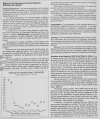
(kuvaajan tarkempi versio löytyy tästä viestistä: LINKKI)
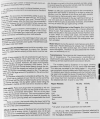
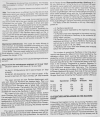

(huomaa: lainaus jatkuu seuraavassa viestissä)
Lähde:
Germany’s Panther Tank: The Quest for Combat Supremacy - Thomas L. Jentz, Hilary L. Doyle - 1995
Lainaukset kirjan sivuilta 130 -137.


(kuvaajan tarkempi versio löytyy tästä viestistä: LINKKI)



(huomaa: lainaus jatkuu seuraavassa viestissä)
Viimeksi muokattu:
Antares
Respected Leader
Saksan Panzerkampfwagen V Panther / PzKpfw V (27.2.1944 jälkeen PzKpfw Panther) panssarivaunujen operatiivinen historia toisen maailmansodan aikana. (HUOMAA: lainaus on jatkoa edellisen viestin lainaukselle)
Lähde:
Germany’s Panther Tank: The Quest for Combat Supremacy - Thomas L. Jentz, Hilary L. Doyle - 1995
Lainaukset kirjan sivuilta 138 -143.

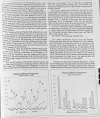
(kuvaajan tarkempi versio löytyy tästä viestistä: LINKKI)
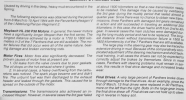
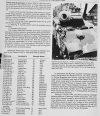
(kuvaajan tarkempi versio löytyy tästä viestistä: LINKKI)
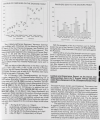
(huomaa: lainaus jatkuu seuraavassa viestissä)
Lähde:
Germany’s Panther Tank: The Quest for Combat Supremacy - Thomas L. Jentz, Hilary L. Doyle - 1995
Lainaukset kirjan sivuilta 138 -143.


(kuvaajan tarkempi versio löytyy tästä viestistä: LINKKI)


(kuvaajan tarkempi versio löytyy tästä viestistä: LINKKI)

(huomaa: lainaus jatkuu seuraavassa viestissä)
Viimeksi muokattu:
Antares
Respected Leader
Saksan Panzerkampfwagen V Panther / PzKpfw V (27.2.1944 jälkeen PzKpfw Panther) panssarivaunujen operatiivinen historia toisen maailmansodan aikana. (HUOMAA: lainaus on jatkoa edellisen viestin lainaukselle)
Lähde:
Germany’s Panther Tank: The Quest for Combat Supremacy - Thomas L. Jentz, Hilary L. Doyle - 1995
Lainaukset kirjan sivuilta 144 -152.
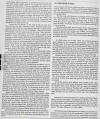
(kuvaajan tarkempi versio löytyy tästä viestistä: LINKKI)
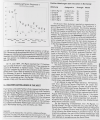
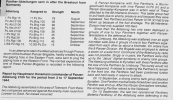
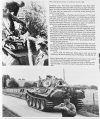
(kuvaajan tarkempi versio löytyy tästä viestistä: LINKKI)
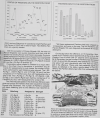
(huomaa: lainaus jatkuu seuraavassa viestissä)
Lähde:
Germany’s Panther Tank: The Quest for Combat Supremacy - Thomas L. Jentz, Hilary L. Doyle - 1995
Lainaukset kirjan sivuilta 144 -152.

(kuvaajan tarkempi versio löytyy tästä viestistä: LINKKI)



(kuvaajan tarkempi versio löytyy tästä viestistä: LINKKI)

(huomaa: lainaus jatkuu seuraavassa viestissä)
Viimeksi muokattu:
Antares
Respected Leader
Saksan Panzerkampfwagen V Panther / PzKpfw V (27.2.1944 jälkeen PzKpfw Panther) panssarivaunujen operatiivinen historia toisen maailmansodan aikana. (HUOMAA: lainaus on jatkoa edellisen viestin lainaukselle)
Lähde:
Germany’s Panther Tank: The Quest for Combat Supremacy - Thomas L. Jentz, Hilary L. Doyle - 1995
Lainaus kirjan sivulta 153.
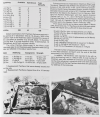
-
Yhdysvaltain panssarimiesten näkemyksiä / kirjoituksia saksan Panzerkampfwagen V Panther / PzKpfw V (27.2.1944 jälkeen PzKpfw Panther) panssarivaunuista.
Lähde:
Germany’s Panther Tank: The Quest for Combat Supremacy - Thomas L. Jentz, Hilary L. Doyle - 1995
Lainaukset kirjan sivuilta 154-156.

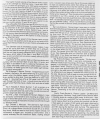
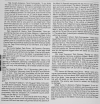
-
Saksan Panzerkampfwagen V Panther / PzKpfw V (27.2.1944 jälkeen PzKpfw Panther) panssarivaunujen optisten tähystyslaitteiden tuotantomäärät toisen maailmansodan aikana.
Lähde:
Germany’s Panther Tank: The Quest for Combat Supremacy - Thomas L. Jentz, Hilary L. Doyle - 1995
Lainaus kirjan sivulta 123.

Lähde:
Germany’s Panther Tank: The Quest for Combat Supremacy - Thomas L. Jentz, Hilary L. Doyle - 1995
Lainaus kirjan sivulta 153.

-
Yhdysvaltain panssarimiesten näkemyksiä / kirjoituksia saksan Panzerkampfwagen V Panther / PzKpfw V (27.2.1944 jälkeen PzKpfw Panther) panssarivaunuista.
Lähde:
Germany’s Panther Tank: The Quest for Combat Supremacy - Thomas L. Jentz, Hilary L. Doyle - 1995
Lainaukset kirjan sivuilta 154-156.



-
Saksan Panzerkampfwagen V Panther / PzKpfw V (27.2.1944 jälkeen PzKpfw Panther) panssarivaunujen optisten tähystyslaitteiden tuotantomäärät toisen maailmansodan aikana.
Lähde:
Germany’s Panther Tank: The Quest for Combat Supremacy - Thomas L. Jentz, Hilary L. Doyle - 1995
Lainaus kirjan sivulta 123.

Viimeksi muokattu:
Antares
Respected Leader
Saksan Panzerkampfwagen V Panther / PzKpfw V (27.2.1944 jälkeen PzKpfw Panther) panssarivaunujen operatiivinen historia toisen maailmansodan aikana. Tässä on tarkemmat kuvat aikaisemmissa viesteissä lainatuista "status of operational Panthers" kuvaajista, numerot ovat aavistuksen paremmin luettavissa. Kuvaajan selitys: katso sanallinen osuus aikaisemmista viesteistä.
Lähde:
Germany’s Panther Tank: The Quest for Combat Supremacy - Thomas L. Jentz, Hilary L. Doyle - 1995
Kuvaaja löytyy kirjan sivulta 132. Aikaisempi viesti josta löytyy tämä kuvaaja osana selittävää tekstiosuutta: LINKKI
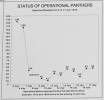
Kuvaaja löytyy kirjan sivulta 139. Aikaisempi viesti josta löytyy tämä kuvaaja osana selittävää tekstiosuutta: LINKKI
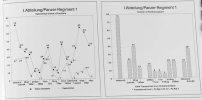
Kuvaaja löytyy kirjan sivulta 143. Aikaisempi viesti josta löytyy tämä kuvaaja osana selittävää tekstiosuutta: LINKKI
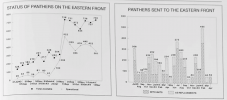
Kuvaaja löytyy kirjan sivulta 147. Aikaisempi viesti josta löytyy tämä kuvaaja osana selittävää tekstiosuutta: LINKKI

Kuvaaja löytyy kirjan sivulta 152. Aikaisempi viesti josta löytyy tämä kuvaaja osana selittävää tekstiosuutta: LINKKI
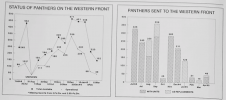
Lähde:
Germany’s Panther Tank: The Quest for Combat Supremacy - Thomas L. Jentz, Hilary L. Doyle - 1995
Kuvaaja löytyy kirjan sivulta 132. Aikaisempi viesti josta löytyy tämä kuvaaja osana selittävää tekstiosuutta: LINKKI

Kuvaaja löytyy kirjan sivulta 139. Aikaisempi viesti josta löytyy tämä kuvaaja osana selittävää tekstiosuutta: LINKKI

Kuvaaja löytyy kirjan sivulta 143. Aikaisempi viesti josta löytyy tämä kuvaaja osana selittävää tekstiosuutta: LINKKI

Kuvaaja löytyy kirjan sivulta 147. Aikaisempi viesti josta löytyy tämä kuvaaja osana selittävää tekstiosuutta: LINKKI

Kuvaaja löytyy kirjan sivulta 152. Aikaisempi viesti josta löytyy tämä kuvaaja osana selittävää tekstiosuutta: LINKKI

Viimeksi muokattu:
Antares
Respected Leader
Saksan Panzerkampfwagen Tiger Ausf. E / PzKpfw Tiger Ausf. E / Tiger I panssarivaunun tuotannosta toisen maailmansodan aikana sekä viikko- ja kuukausituotantomäärät.
Lähde:
Germany's Tiger Tanks: D.W. to Tiger I: Design, Production & Modifications - Thomas L. Jentz, Hilary L. Doyle - 2000
Lainaukset kirjan sivuilta 67-70.
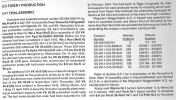
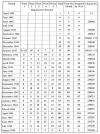
(taulukon summat: "goal for month" = 1 361 kpl, "accepted by WaA" = 1 346 kpl)
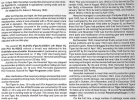
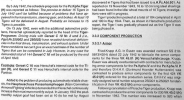

Lähde:
Germany's Tiger Tanks: D.W. to Tiger I: Design, Production & Modifications - Thomas L. Jentz, Hilary L. Doyle - 2000
Lainaukset kirjan sivuilta 67-70.


(taulukon summat: "goal for month" = 1 361 kpl, "accepted by WaA" = 1 346 kpl)



Viimeksi muokattu:
Antares
Respected Leader
Saksan Panzerkampfwagen Tiger Ausf. B / PzKpfw Tiger Ausf. B / Tiger B / Tiger II / Königstiger (liittoutuneiden kutsumanimi King Tiger, joskus näkee myös Royal Tiger) panssarivaunun tuotannosta toisen maailmansodan aikana sekä kuukausituotantomäärät.
Lähde:
Germany's Tiger Tanks: VK45.02 to TIGER II: Design, Production & Modifications - Hilary L. Doyle, Thomas L. Jentz - 1997
Lainaus kirjan sivulta 60.
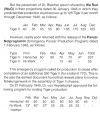
Taulukot löytyvät kirjan sivulta 62.

(taulukon summat: "Production goals reset each month" = 659 kpl, "Actual production accepted by WaA" = 492 kpl
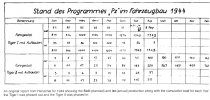
Lähde:
Germany's Tiger Tanks: VK45.02 to TIGER II: Design, Production & Modifications - Hilary L. Doyle, Thomas L. Jentz - 1997
Lainaus kirjan sivulta 60.

Taulukot löytyvät kirjan sivulta 62.

(taulukon summat: "Production goals reset each month" = 659 kpl, "Actual production accepted by WaA" = 492 kpl

Viimeksi muokattu:
Antares
Respected Leader
Thomas L. Jentz ja Hilary Doyle antavat hyvän kuvauksen niistä haasteista ja virheistä joita on tehty toisen maailmansodan jälkeen kun on yritetty arvioida Saksan panssarivaunutuotantoa aikavälillä 1933-1945 ja valmistettuja kokonaismääriä (ei paitsi muiden julkaisuissa niin myös heidän omissaan). Minulla ei ole tiedossa tätä parempaa selvitystyötä, tämä on julkaistu vuonna 2011. Thomas L. Jentz kuoli joulukuussa 2012. Hilary Doyle on elossa ja jatkanut kirjojen julkaisua tämän jälkeen, joten on mahdollista että viimeisen 10 vuoden aikana on saatu lisätietoa - sellaista mitä heiltä puuttui tämän kirjoituksen aikana. Julkaisen silti kirjan taulukot tässä ketjussa, koska ne edustavat minun tietojen mukaan parasta tunnettua tuotantomäärädataa Saksan toisen maailmansodan aikana tapahtuneesta panssarivaunutuotannosta.
Panzer Tracts No. 23 jäi Jentzin viimeiseksi julkaisuksi. Minulla on tällainen kommentti vuodelta 2013: LÄHDE
Lukas Friedli has been announced as the person who will take over after Jentz. He's a nice guy, has already authored several books, both independently and through the Panzer Wrecks label.
En ole tutustunut hänen julkaisuihin, suunnilleen tuohon aikaan oma kiinnostus siirtyi muihin asioihin ja panssarivaunujen historiasta, tekniikasta yms. lukeminen ja uusien julkaisujen seuraaminen jäi pois.
Lähde:
Panzer Tracts No. 23 - Panzer Production from 1933 to 1945 (featuring Waffenamt production statistics enhanced and verified by assembly plant reports and Fgst.Nr. analysis) - Thomas L. Jentz , Hilary Louis Doyle - 2011
Lainaus on kirjan sivuilta 23-1 - 23-4, lihavoinnit ja alleviivaukset ovat alkuperäisen lähteen mukaiset:
Introduction and explanation
Having already discovered the monthly Waffenamt reports on microfilm in the National Archives in 1969, at the instigation of Hilary, we started compiling statistics from these original records in 1973. Our goal was to determine precisely how many of each model of Panzer had been produced by each assembly plant. We also found production reports created as a result of Strategic Bombing Survey and CIOS investigations of assembly plants at the end of the war. These included Krupp-Grusonwerk, Vomag, Miag, M.A.N., Daimler-Benz, MNH, and Henschel which were in American or British controlled areas. Spreadsheets were created to compare the numbers from the assembly plants with the Waffenamt records. In many cases this resulted in contradictory data because some of the Strategic Bombing Survey and CIOS reports include estimates when original records weren't available to the personnel answering investigators' questions.
It was obvious to us that the consolidated Waffenamt reports and post-war reports did not have the details needed to determine precisely how many of each model of Panzer had been produced. A second problem was that the monthly Waffenamt reports only existed for the period from January 1939 to February 1945. Therefore, we started to search for original records from the assembly plants both prewar and during the war. The quest for detailed production data took about 30 years to track down any remaining original documents created by the assembly plants including Alkett, B.M.M., Daimler-Benz, Famo, Henschel/Wegmann, Krauss-Maffei, Krupp-Grusonwerk, M.A.N., and Skoda, as well as the Sonderausschuss - Panzerkampfwagen Fertigung (which kept records by assembly plant - not just summary totals like the Waffenamt).
At the time that we wrote the Encyclopedia of German Tanks of World War II in 1975 and 1976 we did not understand the procurement system used by the German army. At that time, we did not know the numbers of Panzers of each type authorized by In 6 in the prewar period, and therefore made substantial errors (for example in the number of Pz.Kpfw.I Ausf.A and B). Other errors occurred because we did not know whether specialized ve hicles like the Pz.Sfl.IVa were built using a Pz.Kpfw.IV chassis from the normal production run or had a separate contract. Having compiled and studied the surviving records not only from the Waffenamt but those from the Sonderausschuss and assembly plants, we now know the correct answers and more importantly have learned the lesson not to speculate or use logic to fill holes where original re cords did not survive. The following history is a compilation of our exhaustive research efforts over the past 40 years with examples of where historians have been misled.
An understanding of the procurement process in place before and during the war is essential in avoiding some of the mistakes that we made back in 1975/76. Inspektorat 6 in the Allgemeines Heeresamt (general army office) - not the Heeres Waffenamt (army ordnance department) - actually controlled the procurement process. Restrained by their share of the annual army budget, In 6 authorized the procurement of Panzers by specific Auftraegen (authorizations) to the Waffenamt. The Waffenamt then awarded contracts to the assembly plants to produce a specific number of each Panzer type authorized by In 6.
As reported on 8 October 1936, in the Stand der Tankfertigung (status of tank production) the following Panzers had been authorized by In 6.
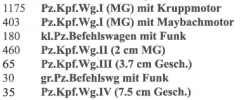
The Waffenamt used these In 6 authorizations to award contracts to the assembly plants and component suppliers. For example, the 460 Pz.Kpfw.II authorized by In 6 consisted of an initial order for 75 1.Serie/LaS100 (Ausf.a/1 to a/3), followed by extension orders for 131 2.Serie/LaS 100 (Ausf.b and c), 44 3.Serie/LaS100 (Ausf.c), and 210 4.Serie/LaS100 (Ausf.A).
On 11 July 1938, In 6 awarded Anschlussauftraege (extension orders) for Rechnungsjahr (accounting year) 1939 to procure 759 Pz.Kpfw.III (3.7 cm) and 223 Pz.Kpfw.IV (7.5 cm). The total orders previously awarded by In 6 then encompassed 2155 Pz.Kpfw. III (3.7 cm) and 640 Pz.Kpfw.IV (7.5 cm). The 2155 Pz.Kpfw.III consisted of 10 1./Z.W. (Ausf.A), 15 2.Z.W. (Ausf.B), 40 3./Z.W. (15Ausf.C & 25 Ausf.D), 96 4./Z.W. (Ausf.E), 435 5./Z.W. (Ausf.F), 800 6./Z.W. (Ausf.G), and 759 7./Z.W.(Ausf.H). The 640 Pz.Kpfw.IV consisted of 35 1./B.W. (Ausf.A), 42 2./B.W. (Ausf.B), 140 3./B.W. (Ausf.C,), 200 4./B.W. (Ausf.D) and 223 6./B.W. (Type E).
As recorded in a status report from Wa J Rue (WuG6): Based on authorizations from AHA (In 6) the following current models of Panzers are still to be delivered as of 1 April 1940:

Based on development work by Wa Pruef 6, AHA (In 6) ordered production of the following Versuchs-Serie of Pz.Kpfw. neuer Bauart:
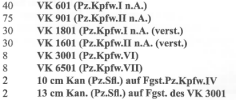
Based on the number authorized by AHA (In 6), the Waffenamt awarded contracts for a specific number of each model of Panzer to assembly plants. As the assembly plants completed Panzer chassis, they were test driven and inspected by the Heeres-Abnahmestelle inspector who, if they passed, released them to return to an assembly plant to have the Aufbau (superstructure and turret) mounted. The completed Panzer was then inspected again for acceptance by a Heeres-Abnahmestelle inspector. When it passed, the inspector completed and signed an Abnahmebericht (acceptance report). A Lieferschein (delivery report) was completed authorizing the accepted Panzer to be sent to the recipient designated by the Waffenamt. Up to 1939 Panzers were sent directly to a unit, but for most of the war Panzers were first sent to a Heeres-Zeugamt (ordnance depot).
Both the Abnahmebericht and Lieferschein included the Waffenamt contract numbers. In order for an assembly plant to get paid, all of the Lieferschein testifying that a contract had been fulfilled were submitted with invoices. The Panzers could be accepted and delivered in batches but this still resulted in several thousands of these documents being created. These Abnahmebericht and Lieferschein documents are the true incontrovertible record testifying that any given Panzer was accepted and delivered to the army. However, after searching for over 40 years, less than one hundred of these reports have been found to pin down exactly when the Panzers were accepted and delivered. Although few in number, they are worth their weight in gold for checking the accuracy of Waffenamt reports.
At the end of the month, each assembly plant sent a monthly Fertigungsbericht to their Heeres-Abnahmestelle which included information on the specific contract number, total number authorized by the contract, type of Panzer, monthly production goal, number Fertiggestellt (completed), number Abgenommen (accepted), number Versandt (delivered), total number accepted under the contract, and number left to be completed. The Fertigungsbericht could be checked for accuracy by the inspectors against the Abnahmeberichte before they sent in their monthly reports to Wa J Rue (WuG 6) in Berlin. Again only very few of these Fertigungsberichte have survived. The acceptance numbers from these monthly Fertigungsberichte were transferred to the firms own statistical reports and these have survived in part for many of the assembly plants including Daimler-Benz, Krupp, Henschel, M.A.N., Miag, MNH, B.M.M. and Skoda.
Based on input from the Heeres-Abnahmestellen, Wa J Rue 6 compiled a monthly report originally entitled Uebersicht ueber den Anfall (Fertigung) von Kraftfahrzeugen which included the total number of each Panzer type completed that month starting with January 1939. Their main purpose was to determine how many of each strategically important vehicle was being produced in comparison to a monthly goal. Having hundreds of different vehicles to keep track of, the decision was made to create consolidated reports of the total number produced instead of reporting the achievements of each assembly plant. These Wa J Rue (WuG 6) reports (renamed Ueberblick ueber den Ruestungsstand von Kraftfahrzeugen), sent monthly to the Heeres Waffenamt, were created by summing the individual Fertigungsberichte from the assembly plants. Another series of monthly reports entitled Der Ueberblick ueber den Ruestungsstand des Heeres (Band Waffen und Geraet) was created by Der Chef der Heeresruestung und Befehlshaber der Ersatzheeres covering the period from September 1939 to February 1945.
In writing detailed histories, like Panzer Tracts 1-1 to 5-4, we wanted to determine the order in which significant modifications had been introduced into the production run for each Ausfuehrung. While a few modifications are mentioned in the AHM (general army bulletin) and H.T.V.Bl. (army technical bulletin), most of the orig inal records ordering these modifications did not survive. Therefore, modification histories can only be reconstructed by examining surviving Panzers and photos identified by Fgst.Nr. In order to correctly determine the order in which the modifications occurred you need to know the Fgst.Nr. series assigned to each assembly plant and their monthly production statistics (and not be prone to speculation and conjecture).
Some of the Fgst.Nr. series assigned to each model can be found in D-Vorschriften (operational and maintenance manuals), modification orders published in the AHM and H.T.V.Bl., and K-Geraetverzeichnis (replacement parts manuals). For example the replacement parts manual for the Sturmschütz (7.5 cm) (Sd.Kfz.142) (einschl. Stu.H.42) Fahrgestell dated February 1944, listed:

but, did not provide the Fgst.Nr. series for the second major assembly plant, Miag with Fgst.Nr. series 95001 - 97600 or the extension contracts to Alkett with Fgst.Nr. series 93851 - 94250 and 105001 to 108800.
The replacement parts manual for the Panzerkampfwagen IV (Sd.Kfz.161) (einschl. abarten Sturmpanzer 43, Stu.Gesch.neuer Art, and 7.5 cm Stu.Gesch.40) Fahrgestell dated March 1944, listed:
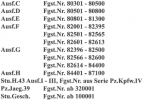
With the exception of the Ausf.F and start of the Ausf.G, this list was not divided into the Fgst.Nr. series assigned to each of the three assembly plants - Krupp-Grusonwerk, Vomag, and Nibelungenwerk..
A list of the Fgst.Nr. series assigned to the assembly plants by contracts was published in the AHM for the Pz.Kpfw.III Ausf.F and Ausf.G revealing that seven different assembly firms had been involved in its production. From this data one knows that a total of 435 Ausf.F and 600 Ausf.G had been ordered from seven different assembly plants, but it didn't reveal which Fgst.Nr. series was assigned to a specific assembly plant. Furthermore, there weren't any detailed Fgst.Nr. lists published for the Pz.Kpfw.III Ausf.H, J, L, M, or N.
The statistics on when any specific Panzer was produced can't be extracted from surviving original documents created by the Waffenamt during the war - when more than one assembly firm was involved. Fortunately two other important sources of data survived to solve the problem - (1) reports listing the Fgst.Nr. of issued Panzers and (2) the identification of which Fgst.Nr. sequences were assigned to each assembly plant.
The primary source of Fgst.Nr. are reports sent in to Oberquartiermeister (O.Qu.) listing the exact holdings of each Panzer unit, including their identification by Fgst.Nr. Even though the central records kept by O.Qu. in Berlin did not survive, two different armies kept copies of these reports from the Fall of 1942 to the Summer of 1944.
Roughly one-third of all the Panzers produced during and before the war have been identified by their Fgst.Nr. - any statistician will inform you that this is an extraordinarily wealthy sampling of a data set. These identified Fgst.Nr. are used to verify that a contract was actually filled as well as helping define blocks of serial numbers associated with each assembly plant.
But, these reports sent to O.Qu. rarely identified the assembly plant with the Fgst.Nr. This information came from Economic Warfare Division reports compiled from data collected by examining captured Panzers on the battlefields of North Africa, Tunisia, Italy, and Northwest Europe. This data was collected in an attempt by British Intelligence to estimate German tank production during the war and fortunately contains the identification of the assembly plants (at first the assembly plant name and later the three letter code) associated with many of the Fgst.Nr. series. Without this data input, it is impossible to sort out the Pz.Kpfw.III, Pz.Kpfw.IV, and Pz.Kpfw.Panther production runs by Ausfuehrung correctly.
In addition, it was well worth the effort to col lect the identifying Fgst.Nr. from the surviving Panzers in museums and private collections around the world. At the start we only had a few Fgst.Nr. from School of Tank Technology reports of which some of the subjects still sur vive today in the Tank Museum in Bovington, England. An attempt was made to expand this list, starting with the Panzers on display at the Ordnance Museum in Aberdeen, Maryland. At first, not knowing anything about identi fication markings on Panzers, all the numbers and let ters stamped into the exterior armor (since most of them were welded shut) were recorded. Even though only the Pz.Kpfw.I, II, and 38t series have their actual Fgst.Nr. stamped into the exterior, this exercise was not a waste of time because it helped to identify the difference between a Wanne Nr. (armor hull) and the true Fgst.Nr. (chassis number). The armor manufactures stamped a Wanne Nr., Aufbau Nr., and Turm Nr. into the exterior often us ing the same number sequence as the true Fgst.Nr. for the same model. For example, Sturmgeschuetz Ausf.F/8 with Fgst.Nr. 91507 has close to the same Wanne Nr. 91530 and Aufbau Nr. 91518 - the difference is that the Fgst.Nr. is accompanied by the three letter code "csg" for the assembly plant and the Wanne and Aufbau Nr. are ac companied by the three letter code "cwb" for the armor supplier.
(lainaus jatkuu seuraavassa viestissä)
Panzer Tracts No. 23 jäi Jentzin viimeiseksi julkaisuksi. Minulla on tällainen kommentti vuodelta 2013: LÄHDE
Lukas Friedli has been announced as the person who will take over after Jentz. He's a nice guy, has already authored several books, both independently and through the Panzer Wrecks label.
En ole tutustunut hänen julkaisuihin, suunnilleen tuohon aikaan oma kiinnostus siirtyi muihin asioihin ja panssarivaunujen historiasta, tekniikasta yms. lukeminen ja uusien julkaisujen seuraaminen jäi pois.
Lähde:
Panzer Tracts No. 23 - Panzer Production from 1933 to 1945 (featuring Waffenamt production statistics enhanced and verified by assembly plant reports and Fgst.Nr. analysis) - Thomas L. Jentz , Hilary Louis Doyle - 2011
Lainaus on kirjan sivuilta 23-1 - 23-4, lihavoinnit ja alleviivaukset ovat alkuperäisen lähteen mukaiset:
Introduction and explanation
Having already discovered the monthly Waffenamt reports on microfilm in the National Archives in 1969, at the instigation of Hilary, we started compiling statistics from these original records in 1973. Our goal was to determine precisely how many of each model of Panzer had been produced by each assembly plant. We also found production reports created as a result of Strategic Bombing Survey and CIOS investigations of assembly plants at the end of the war. These included Krupp-Grusonwerk, Vomag, Miag, M.A.N., Daimler-Benz, MNH, and Henschel which were in American or British controlled areas. Spreadsheets were created to compare the numbers from the assembly plants with the Waffenamt records. In many cases this resulted in contradictory data because some of the Strategic Bombing Survey and CIOS reports include estimates when original records weren't available to the personnel answering investigators' questions.
It was obvious to us that the consolidated Waffenamt reports and post-war reports did not have the details needed to determine precisely how many of each model of Panzer had been produced. A second problem was that the monthly Waffenamt reports only existed for the period from January 1939 to February 1945. Therefore, we started to search for original records from the assembly plants both prewar and during the war. The quest for detailed production data took about 30 years to track down any remaining original documents created by the assembly plants including Alkett, B.M.M., Daimler-Benz, Famo, Henschel/Wegmann, Krauss-Maffei, Krupp-Grusonwerk, M.A.N., and Skoda, as well as the Sonderausschuss - Panzerkampfwagen Fertigung (which kept records by assembly plant - not just summary totals like the Waffenamt).
At the time that we wrote the Encyclopedia of German Tanks of World War II in 1975 and 1976 we did not understand the procurement system used by the German army. At that time, we did not know the numbers of Panzers of each type authorized by In 6 in the prewar period, and therefore made substantial errors (for example in the number of Pz.Kpfw.I Ausf.A and B). Other errors occurred because we did not know whether specialized ve hicles like the Pz.Sfl.IVa were built using a Pz.Kpfw.IV chassis from the normal production run or had a separate contract. Having compiled and studied the surviving records not only from the Waffenamt but those from the Sonderausschuss and assembly plants, we now know the correct answers and more importantly have learned the lesson not to speculate or use logic to fill holes where original re cords did not survive. The following history is a compilation of our exhaustive research efforts over the past 40 years with examples of where historians have been misled.
An understanding of the procurement process in place before and during the war is essential in avoiding some of the mistakes that we made back in 1975/76. Inspektorat 6 in the Allgemeines Heeresamt (general army office) - not the Heeres Waffenamt (army ordnance department) - actually controlled the procurement process. Restrained by their share of the annual army budget, In 6 authorized the procurement of Panzers by specific Auftraegen (authorizations) to the Waffenamt. The Waffenamt then awarded contracts to the assembly plants to produce a specific number of each Panzer type authorized by In 6.
As reported on 8 October 1936, in the Stand der Tankfertigung (status of tank production) the following Panzers had been authorized by In 6.

The Waffenamt used these In 6 authorizations to award contracts to the assembly plants and component suppliers. For example, the 460 Pz.Kpfw.II authorized by In 6 consisted of an initial order for 75 1.Serie/LaS100 (Ausf.a/1 to a/3), followed by extension orders for 131 2.Serie/LaS 100 (Ausf.b and c), 44 3.Serie/LaS100 (Ausf.c), and 210 4.Serie/LaS100 (Ausf.A).
On 11 July 1938, In 6 awarded Anschlussauftraege (extension orders) for Rechnungsjahr (accounting year) 1939 to procure 759 Pz.Kpfw.III (3.7 cm) and 223 Pz.Kpfw.IV (7.5 cm). The total orders previously awarded by In 6 then encompassed 2155 Pz.Kpfw. III (3.7 cm) and 640 Pz.Kpfw.IV (7.5 cm). The 2155 Pz.Kpfw.III consisted of 10 1./Z.W. (Ausf.A), 15 2.Z.W. (Ausf.B), 40 3./Z.W. (15Ausf.C & 25 Ausf.D), 96 4./Z.W. (Ausf.E), 435 5./Z.W. (Ausf.F), 800 6./Z.W. (Ausf.G), and 759 7./Z.W.(Ausf.H). The 640 Pz.Kpfw.IV consisted of 35 1./B.W. (Ausf.A), 42 2./B.W. (Ausf.B), 140 3./B.W. (Ausf.C,), 200 4./B.W. (Ausf.D) and 223 6./B.W. (Type E).
As recorded in a status report from Wa J Rue (WuG6): Based on authorizations from AHA (In 6) the following current models of Panzers are still to be delivered as of 1 April 1940:

Based on development work by Wa Pruef 6, AHA (In 6) ordered production of the following Versuchs-Serie of Pz.Kpfw. neuer Bauart:

Based on the number authorized by AHA (In 6), the Waffenamt awarded contracts for a specific number of each model of Panzer to assembly plants. As the assembly plants completed Panzer chassis, they were test driven and inspected by the Heeres-Abnahmestelle inspector who, if they passed, released them to return to an assembly plant to have the Aufbau (superstructure and turret) mounted. The completed Panzer was then inspected again for acceptance by a Heeres-Abnahmestelle inspector. When it passed, the inspector completed and signed an Abnahmebericht (acceptance report). A Lieferschein (delivery report) was completed authorizing the accepted Panzer to be sent to the recipient designated by the Waffenamt. Up to 1939 Panzers were sent directly to a unit, but for most of the war Panzers were first sent to a Heeres-Zeugamt (ordnance depot).
Both the Abnahmebericht and Lieferschein included the Waffenamt contract numbers. In order for an assembly plant to get paid, all of the Lieferschein testifying that a contract had been fulfilled were submitted with invoices. The Panzers could be accepted and delivered in batches but this still resulted in several thousands of these documents being created. These Abnahmebericht and Lieferschein documents are the true incontrovertible record testifying that any given Panzer was accepted and delivered to the army. However, after searching for over 40 years, less than one hundred of these reports have been found to pin down exactly when the Panzers were accepted and delivered. Although few in number, they are worth their weight in gold for checking the accuracy of Waffenamt reports.
At the end of the month, each assembly plant sent a monthly Fertigungsbericht to their Heeres-Abnahmestelle which included information on the specific contract number, total number authorized by the contract, type of Panzer, monthly production goal, number Fertiggestellt (completed), number Abgenommen (accepted), number Versandt (delivered), total number accepted under the contract, and number left to be completed. The Fertigungsbericht could be checked for accuracy by the inspectors against the Abnahmeberichte before they sent in their monthly reports to Wa J Rue (WuG 6) in Berlin. Again only very few of these Fertigungsberichte have survived. The acceptance numbers from these monthly Fertigungsberichte were transferred to the firms own statistical reports and these have survived in part for many of the assembly plants including Daimler-Benz, Krupp, Henschel, M.A.N., Miag, MNH, B.M.M. and Skoda.
Based on input from the Heeres-Abnahmestellen, Wa J Rue 6 compiled a monthly report originally entitled Uebersicht ueber den Anfall (Fertigung) von Kraftfahrzeugen which included the total number of each Panzer type completed that month starting with January 1939. Their main purpose was to determine how many of each strategically important vehicle was being produced in comparison to a monthly goal. Having hundreds of different vehicles to keep track of, the decision was made to create consolidated reports of the total number produced instead of reporting the achievements of each assembly plant. These Wa J Rue (WuG 6) reports (renamed Ueberblick ueber den Ruestungsstand von Kraftfahrzeugen), sent monthly to the Heeres Waffenamt, were created by summing the individual Fertigungsberichte from the assembly plants. Another series of monthly reports entitled Der Ueberblick ueber den Ruestungsstand des Heeres (Band Waffen und Geraet) was created by Der Chef der Heeresruestung und Befehlshaber der Ersatzheeres covering the period from September 1939 to February 1945.
In writing detailed histories, like Panzer Tracts 1-1 to 5-4, we wanted to determine the order in which significant modifications had been introduced into the production run for each Ausfuehrung. While a few modifications are mentioned in the AHM (general army bulletin) and H.T.V.Bl. (army technical bulletin), most of the orig inal records ordering these modifications did not survive. Therefore, modification histories can only be reconstructed by examining surviving Panzers and photos identified by Fgst.Nr. In order to correctly determine the order in which the modifications occurred you need to know the Fgst.Nr. series assigned to each assembly plant and their monthly production statistics (and not be prone to speculation and conjecture).
Some of the Fgst.Nr. series assigned to each model can be found in D-Vorschriften (operational and maintenance manuals), modification orders published in the AHM and H.T.V.Bl., and K-Geraetverzeichnis (replacement parts manuals). For example the replacement parts manual for the Sturmschütz (7.5 cm) (Sd.Kfz.142) (einschl. Stu.H.42) Fahrgestell dated February 1944, listed:

but, did not provide the Fgst.Nr. series for the second major assembly plant, Miag with Fgst.Nr. series 95001 - 97600 or the extension contracts to Alkett with Fgst.Nr. series 93851 - 94250 and 105001 to 108800.
The replacement parts manual for the Panzerkampfwagen IV (Sd.Kfz.161) (einschl. abarten Sturmpanzer 43, Stu.Gesch.neuer Art, and 7.5 cm Stu.Gesch.40) Fahrgestell dated March 1944, listed:

With the exception of the Ausf.F and start of the Ausf.G, this list was not divided into the Fgst.Nr. series assigned to each of the three assembly plants - Krupp-Grusonwerk, Vomag, and Nibelungenwerk..
A list of the Fgst.Nr. series assigned to the assembly plants by contracts was published in the AHM for the Pz.Kpfw.III Ausf.F and Ausf.G revealing that seven different assembly firms had been involved in its production. From this data one knows that a total of 435 Ausf.F and 600 Ausf.G had been ordered from seven different assembly plants, but it didn't reveal which Fgst.Nr. series was assigned to a specific assembly plant. Furthermore, there weren't any detailed Fgst.Nr. lists published for the Pz.Kpfw.III Ausf.H, J, L, M, or N.
The statistics on when any specific Panzer was produced can't be extracted from surviving original documents created by the Waffenamt during the war - when more than one assembly firm was involved. Fortunately two other important sources of data survived to solve the problem - (1) reports listing the Fgst.Nr. of issued Panzers and (2) the identification of which Fgst.Nr. sequences were assigned to each assembly plant.
The primary source of Fgst.Nr. are reports sent in to Oberquartiermeister (O.Qu.) listing the exact holdings of each Panzer unit, including their identification by Fgst.Nr. Even though the central records kept by O.Qu. in Berlin did not survive, two different armies kept copies of these reports from the Fall of 1942 to the Summer of 1944.
Roughly one-third of all the Panzers produced during and before the war have been identified by their Fgst.Nr. - any statistician will inform you that this is an extraordinarily wealthy sampling of a data set. These identified Fgst.Nr. are used to verify that a contract was actually filled as well as helping define blocks of serial numbers associated with each assembly plant.
But, these reports sent to O.Qu. rarely identified the assembly plant with the Fgst.Nr. This information came from Economic Warfare Division reports compiled from data collected by examining captured Panzers on the battlefields of North Africa, Tunisia, Italy, and Northwest Europe. This data was collected in an attempt by British Intelligence to estimate German tank production during the war and fortunately contains the identification of the assembly plants (at first the assembly plant name and later the three letter code) associated with many of the Fgst.Nr. series. Without this data input, it is impossible to sort out the Pz.Kpfw.III, Pz.Kpfw.IV, and Pz.Kpfw.Panther production runs by Ausfuehrung correctly.
In addition, it was well worth the effort to col lect the identifying Fgst.Nr. from the surviving Panzers in museums and private collections around the world. At the start we only had a few Fgst.Nr. from School of Tank Technology reports of which some of the subjects still sur vive today in the Tank Museum in Bovington, England. An attempt was made to expand this list, starting with the Panzers on display at the Ordnance Museum in Aberdeen, Maryland. At first, not knowing anything about identi fication markings on Panzers, all the numbers and let ters stamped into the exterior armor (since most of them were welded shut) were recorded. Even though only the Pz.Kpfw.I, II, and 38t series have their actual Fgst.Nr. stamped into the exterior, this exercise was not a waste of time because it helped to identify the difference between a Wanne Nr. (armor hull) and the true Fgst.Nr. (chassis number). The armor manufactures stamped a Wanne Nr., Aufbau Nr., and Turm Nr. into the exterior often us ing the same number sequence as the true Fgst.Nr. for the same model. For example, Sturmgeschuetz Ausf.F/8 with Fgst.Nr. 91507 has close to the same Wanne Nr. 91530 and Aufbau Nr. 91518 - the difference is that the Fgst.Nr. is accompanied by the three letter code "csg" for the assembly plant and the Wanne and Aufbau Nr. are ac companied by the three letter code "cwb" for the armor supplier.
(lainaus jatkuu seuraavassa viestissä)
Viimeksi muokattu:
Antares
Respected Leader
(edellisen viestin lainaus jatkuu - lainaus on kirjan sivuilta 23-4 - 23-7, lihavoinnit ja alleviivaukset ovat alkuperäisen lähteen mukaiset)
Starting in 1941, Fertigungskennzeichen (three letter codes) were assigned to hide the identity of all Waffenamt contractors including the Panzer assembly plants and armor suppliers. In practice this didn't work for assembly plants that were in production prior to receiving their three letter code to stamp into the Fgst.Nr.Schild. Some assembly plants continued to use the same Fgst. Nr.Schild as before - just cutting their name off and stamping on the three letter code. Even when the Fgst.Nr.Schild design was changed, the change was made in the middle of a production run. Therefore, when Pz.Kpfw.IV Ausf.E Fgst.Nr. 80814 was identified as Krupp-Grusonwerk in Magdeburg on its Fgst.Nr.Schild, it didn't take a genius to figure out who made Fgst.Nr. 80837 with its plate stamped "bqo". But, the British did have a difficult time identifying the assembly plants that started after 1941 (such as Vomag (ajk), Nibelungenwerk (hhv), and Alkett Werk Spandau (koc)) and therefore hadn't previously completed Panzers with serial number plates identified by location or assembly plant name.
Fortunately a rare copy of the super-secret Fertigungskennzeichen code book was found and preserved by Colonel Jarrett, Curator of the Ordnance Museum, so that we now know the three letter codes assigned to all of the Panzer assembly plants and armor manufacturers.
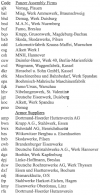
Problems exist in trying to correctly identify how many were produced each month by Fgst.Nr. when only one assembly firm was involved, let alone the complexities created when several assembly plants were producing the same model. This occurs with the Pz.Kpfw.IV Ausf.C, D, E and F (due to chassis being taken out of these production series for Brueckenleger, Infanterie Sturmsteg, Munitions-Traeger for the Karl-Geraet, and diverted for trials by Wa Pruef 6), the Pz.Kpfw.38t.Ausf.A to G and S (because the Waffenamt reported some Pz.Kpfw.38t that were produced for Slovakia), and the Sturmgeschuetz Ausf.A to E (because the Waffenamt did not report the six Ausf.A produced by using Pz.Kpfw.III Ausf.G chassis).
When attempting to sort out this complex puzzle it is very important to have exhaustively conducted research to find all the surviving original document sources. Major mistakes result when an attempt is made to publish a factual history without having a copy of the manual listing the Fgst.Nr. series assigned to each Ausf. and without having the Fgst.Nr. reports from units to determine which Fgst.Nr. sequences were actually filled for each Ausf. The order for 250 2.sPak (otherwise known as the StuG Ausf.B) was completed as proven by Fgst.Nr. 90339 repaired by Deutsche Eisenwerke on 19 May 1942 and Fgst. Nr. 90349 with StuG Abt.210 on 1 February 1943. The StuG Ausf.G Fgst.Nr. series 91901 to 92000 was also filled as proven by Fgst.Nr. 91903 and 91997 reported by StuG Abt.909. And, StuG Ausf.G Fgst.Nr. Serie 94251 to 95000 was not filled - not a single unit reported any Fgst.Nr. in this sequence.
Walter J. Spielberger was the leader in publish ing Panzer histories. Living at the time in California, Walter did not have access to many original records but was working mainly with reports created by Allied military in telligence. In his first history of Der Panzerkampfwagen III und seine Abarten and Der Panzerkampfwagen IV und seine Abarten printed in the magazine Feldgrau in 1962/63, Walter identified the production series as:
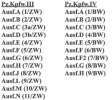
Not having access to many original records, Wal ter did not know that the ZW Serie (abbreviation for the code name Zugfuehrerwagen) had ended with the 8./Z.W.
There never was a 9./Z.W., 10./Z.W. or 11./Z.W. series as signed to contracts during the war. The 8./Z.W. series was used for the Ausf.J, K, L, M, and N which all used the same Fahrgestell with variations in armament and fording capability. Only having a list from 1938 with the first five B.W. series from 1./B.W. as the Ausf.A to 5./B.W. as the Ausf.E, Walter did not have the information that a series of 48 Pz.Kpfw.IV were ordered for the SS in late 1938 and named the 5./B.W. Serie, resulting in both the 4. and 5./B.W. series being used for the Pz.Kpfw.IV Ausf.D. Lacking any other information on the further series, Walter logically continued the series with the Pz.Kpfw.IV Ausf.F as the 6./B.W. (instead of as proven when Krupp's original records were later found, that the 6./B.W. was the Ausf.E, 7./B.W. the Ausf.F, 8./B.W. the Ausf.G, 9./B.W. the Ausf.H, and 10.B.W. the Ausf.J.). These mistakes occurred because logic was used to fill gaps where data was missing in order to create a "complete" history. As we have learned through the course of 40 years of digging out the surviving original records, whenever "logic" has been used to fill gaps in the history - it is invariably proven to be a wrong guess when a document written at the time by a participant in the design, production, and use of the Panzers reveals the correct answer. Since the Pz.Kpfw.III was code named "Zugfuehrerwagen" it appeared logical that the Pz.Kpfw.IV code name B.W. stood for "Bataillonsfuehrerwagen". It wasn't until digging through the surviving records from Krupp written in 1934 that we discovered that B.W. actually stood for "Begleitwagen".
The codes La.S., La.S.100, Z.W., B.W., and s.Pak were used as official designations in contracts awarded to the assembly plants and in correspondence with the Waffenamt dealing with production issues and modifications. For example, the firm Fried.Krupp Grusonwerk A.G. was awarded Auftrag Nr.67 241/37 for 42 Stueck Panzerkampfwagen-Fahrgestell fuer 2./Bw. When inspected for release to mount superstructure and turret, they were identified on the acceptance reports as Pz.Kpfw.IV-Fahrgestellen Kennwort 2./Bw. These code names (La.S., La.S.100, Z.W., B.W., and s.Pak) did not appear on serial number plates nor were they listed in user or maintenance manuals.
Instead of a code name, the appropriate Ausfuehrung (model) designation was stamped into the Panzer's serial number plates. These were to be used by the troops to identify the correct operational and maintenance manuals and replacement parts lists. During the war, the Ausf. designation was only used by maintenance personnel, not those operating the Panzers. The crews simply referred to their Panzers as a Panzer I, II, III kurz, III lang, IV kz, IV lang, Panther (or Panzer V), or Tiger (or Panzer VI), but not by the Ausf. letter and certainly not by the Sd.Kfz. number.
It is only in the post-war era in books and plastic models that the Ausf. letter has come into use as a means of identifying a particular Panzer. This has led to using external features to misidentify an Ausf. and using secondary features such as brake access hatches, track guards, and superstructure shape to create names for sub-variants of an Ausf. Due to modifications being ordered during the production run of a given Ausf., the external appearance of Panzers frequently changed without the Ausf. designation being changed. There were a few exceptions that occurred in March 1942 when the Pz.Kpfw.III Ausf.J armed with a 5 cm Kw.K. L/60 was renamed Ausf.L, the Pz.Kpfw.IV Ausf.F armed with a 7.5 cm Kw.K.40 L/43 was renamed Ausf.F2 (and then Ausf.G), and the Sturmgeschuetz Ausf.E armed with a 7.5 cm Stu.K.40 L/43 was renamed Ausf.F. To create a factual history, only the Ausf. designations used during the war should be used. New Ausf. designations shouldn't be created to explain modifications seen in photographs.
With the exception of six Sturmgeschuetz Ausf.A completed on Pz.Kpfw.III Ausf.G chassis, the Sturmgeschuetz Ausf.A through Ausf.F chassis were based on (but not identical to) the 5./Z.W. design. However, starting with the Ausf.F/8 the chassis was based on (but not identical to) the 8./Z.W. design. Both of the hulls for the surviving StuG Ausf.F/8 are stamped with the code cwb along with the Wanne Nr., the year, and the number made that year. The stampings 91530 cwb 474-1942 and 91610 cwb 554-1942 reveal that Brandenburger Eisenwerke made all the hulls for the StuG Ausf.F/8. Wanne 91530 has single piece brake access hatches with four locks and Wanne 91610 has two piece brake access hatches with side hinges. At the start of production run the StuG Ausf.F/8 Wanne had single piece brake access hatches with hinges at the front - just like on an 8./Z.W. Wanne for a Pz.Kpfw. III Ausf.J and L. As ordered, Brandenburger Eisenwerke simply started making StuG Ausf.F/8 Wannen patterned after the 8./Z.W. Wanne - and made modifications to the brake access hatches (and other features) during the production run. As proven by the armor suppliers identification stamping, the StuG Ausf.F/8 were not assembled using 8./Z.W. Wannen left over as Pz.Kpfw.III production was phased out but had new hulls made specifically for them. The same is true at the start of the StuG Ausf.G production when two new armor suppliers were added in order to rapidly increase the production rate. With the exception of the 142 StuG Ausf.G Fahrgestell completed by M.A.N., there weren't any StuG Ausf.G assembled by Alkett or Miag using left over 8./Z.W. Wannen. Again, the two new armor suppliers Deutsche Edelstahl werke A.G., Werk Hannover (code chh) and Stahlwerke Harkort-Eichen, Hagen (code frp) were making a transition to StuG Ausf.G Wannen and not simply using left over 8./Z.W. Wannen (and certainly not 9/ZW or 10/ZW Wannen - code names that never existed during the war).
While there had been several bombing raids that had previously caused production problems, it wasn't until the late fall of 1943 that the Waffenamt became concerned about their serious impact. While the assembly plants themselves had not been targeted for 'precision' bombing raids until 1944, area attacks on cities was sufficient to be disruptive - such as the raid on Kassel during the night of 22/23 October 1943 and the raid on Berlin on 26 November 1943. The Waffenamt used planned projections to determine that the Absinken der Fertigung Infolge Fliegerschaden (loss of production due to bomb damage) had been 79 Tiger I at Henschel from October to December 1943 and 177 Sturmgeschuetz at Alkett in November and December 1943. But, these were losses in production NOT losses as Panzers destroyed.
While there are photos of a several Panzer hulls damaged on the assembly lines, it is fairly easy to prove that very few Panzers were destroyed in the assembly plants as the result of bombing raids when they were specifically targeted in 1944 and early 1945. Henschel was subjected to seven bombing raids (22, 27 and 28Sep, 2 and 7Oct, 15Dec44, and 9Mar45) in which the assembly plant was the target (3712 tons of high explosive and 2167 tons of incendiary bombs dropped) and there was a heavy area raid 30Dec/1Jan45 (1475 tons of HE bombs). While production was severely inhibited, the daily reports tracking the status of each Tiger II by Fgst.Nr. reveal that there wasn't a single one destroyed (as shown in the accompanying table accounting for every Tiger II by Fgst.Nr. though the end of production in March 1945).
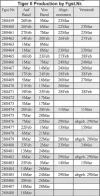
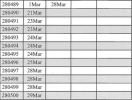
While the heavy Tiger II may not have been as susceptible to damage as the lighter Panzers, the limited data available also proves that there were very few Panzers destroyed during bombing raids. Krupp Grusonwerk in Magdeburg-Buckau was hit by five bombing raids directed at the assembly plant (5Aug, 11Sep, 70ct, 16Jan, 2Mar45 total of 1289 tons of bombs) and seven area raids dropping 8404 tons of bombs. The surviving copies of the Lieferschein (delivery reports) listing the Sturmgeschuetz IV by Fgst.Nr. reveal that there had been a maximum of three destroyed (Fgst.Nr.101111 was delivered on 26 March 1945 with a total of 1111 completed - the last three in April 1945).
Miag was hit by two plant raids (5Aug44 and 3Mar45 with a total of 310 tons of HE bombs and 342 tons of incendiary bombs) and six area raids (from 20Feb44 to 29Mar45 with a total of 2006 tons of HE bombs and 2250 tons of incendiary bombs), which severely inhibited production. Destruction of Sturmgeschuetz III due to bombing was not mentioned by the plant manager in his report dated 30Dec44 on the production difficulties caused by bombing raids in 1944. When compared to a total of 2586 Sturmgeschuetz III assembled by Miag (equal to reaching Fgst.Nr.97586), Fgst.Nr.97567 reported as being present in the Heeres Zeugamt on 19 January 1945 proves that the number of Sturmgeschuetz III destroyed during bombing attacks was fairly insignificant - and certainly not the hundreds of losses claimed as factual history.
Destruction of Panthers caused by bombing raids on the three major assembly plants - M.A.N., Nuernberg, Daimler-Benz, Berlin, and MNH, Hannover - were also a very small number as revealed by Fgst.Nr. analysis. Fgst. Nr.121439 accepted by a Waffenamt inspector was still at the M.A.N. assembly plant at the end of the war. Fgst. Nr.125293 from Daimler-Benz and Fgst.Nr.129104 from MNH were issued on 14 April 1945. All three of these Fgst.Nr. are in line with the total number reported as produced by each of the three assembly plant and therefore reveal that there wasn't any significant destruction of Panthers from bombing raids.
With a few exceptions, the last complete monthly production reports are for March 1945. Therefore, in some cases issue records have been used to estimate production that occurred at the end of the War in April 1945. These estimates are identified with the "~" sign.
The following tables were created to precisely present statistical data, divided into each major Panzer series; accompanied by photographs of each significant model including the correct identification and number manufactured as photo captions. We have spent a lifetime dedicated to compiling as accurate a record as surviving records allows. Facts are not copyrightable and we want others to utilize our efforts in creating their own factual histories. Please don't compromise our efforts by mixing this primary source data with speculations from unreliable published sources.
Starting in 1941, Fertigungskennzeichen (three letter codes) were assigned to hide the identity of all Waffenamt contractors including the Panzer assembly plants and armor suppliers. In practice this didn't work for assembly plants that were in production prior to receiving their three letter code to stamp into the Fgst.Nr.Schild. Some assembly plants continued to use the same Fgst. Nr.Schild as before - just cutting their name off and stamping on the three letter code. Even when the Fgst.Nr.Schild design was changed, the change was made in the middle of a production run. Therefore, when Pz.Kpfw.IV Ausf.E Fgst.Nr. 80814 was identified as Krupp-Grusonwerk in Magdeburg on its Fgst.Nr.Schild, it didn't take a genius to figure out who made Fgst.Nr. 80837 with its plate stamped "bqo". But, the British did have a difficult time identifying the assembly plants that started after 1941 (such as Vomag (ajk), Nibelungenwerk (hhv), and Alkett Werk Spandau (koc)) and therefore hadn't previously completed Panzers with serial number plates identified by location or assembly plant name.
Fortunately a rare copy of the super-secret Fertigungskennzeichen code book was found and preserved by Colonel Jarrett, Curator of the Ordnance Museum, so that we now know the three letter codes assigned to all of the Panzer assembly plants and armor manufacturers.

Problems exist in trying to correctly identify how many were produced each month by Fgst.Nr. when only one assembly firm was involved, let alone the complexities created when several assembly plants were producing the same model. This occurs with the Pz.Kpfw.IV Ausf.C, D, E and F (due to chassis being taken out of these production series for Brueckenleger, Infanterie Sturmsteg, Munitions-Traeger for the Karl-Geraet, and diverted for trials by Wa Pruef 6), the Pz.Kpfw.38t.Ausf.A to G and S (because the Waffenamt reported some Pz.Kpfw.38t that were produced for Slovakia), and the Sturmgeschuetz Ausf.A to E (because the Waffenamt did not report the six Ausf.A produced by using Pz.Kpfw.III Ausf.G chassis).
When attempting to sort out this complex puzzle it is very important to have exhaustively conducted research to find all the surviving original document sources. Major mistakes result when an attempt is made to publish a factual history without having a copy of the manual listing the Fgst.Nr. series assigned to each Ausf. and without having the Fgst.Nr. reports from units to determine which Fgst.Nr. sequences were actually filled for each Ausf. The order for 250 2.sPak (otherwise known as the StuG Ausf.B) was completed as proven by Fgst.Nr. 90339 repaired by Deutsche Eisenwerke on 19 May 1942 and Fgst. Nr. 90349 with StuG Abt.210 on 1 February 1943. The StuG Ausf.G Fgst.Nr. series 91901 to 92000 was also filled as proven by Fgst.Nr. 91903 and 91997 reported by StuG Abt.909. And, StuG Ausf.G Fgst.Nr. Serie 94251 to 95000 was not filled - not a single unit reported any Fgst.Nr. in this sequence.
Walter J. Spielberger was the leader in publish ing Panzer histories. Living at the time in California, Walter did not have access to many original records but was working mainly with reports created by Allied military in telligence. In his first history of Der Panzerkampfwagen III und seine Abarten and Der Panzerkampfwagen IV und seine Abarten printed in the magazine Feldgrau in 1962/63, Walter identified the production series as:

Not having access to many original records, Wal ter did not know that the ZW Serie (abbreviation for the code name Zugfuehrerwagen) had ended with the 8./Z.W.
There never was a 9./Z.W., 10./Z.W. or 11./Z.W. series as signed to contracts during the war. The 8./Z.W. series was used for the Ausf.J, K, L, M, and N which all used the same Fahrgestell with variations in armament and fording capability. Only having a list from 1938 with the first five B.W. series from 1./B.W. as the Ausf.A to 5./B.W. as the Ausf.E, Walter did not have the information that a series of 48 Pz.Kpfw.IV were ordered for the SS in late 1938 and named the 5./B.W. Serie, resulting in both the 4. and 5./B.W. series being used for the Pz.Kpfw.IV Ausf.D. Lacking any other information on the further series, Walter logically continued the series with the Pz.Kpfw.IV Ausf.F as the 6./B.W. (instead of as proven when Krupp's original records were later found, that the 6./B.W. was the Ausf.E, 7./B.W. the Ausf.F, 8./B.W. the Ausf.G, 9./B.W. the Ausf.H, and 10.B.W. the Ausf.J.). These mistakes occurred because logic was used to fill gaps where data was missing in order to create a "complete" history. As we have learned through the course of 40 years of digging out the surviving original records, whenever "logic" has been used to fill gaps in the history - it is invariably proven to be a wrong guess when a document written at the time by a participant in the design, production, and use of the Panzers reveals the correct answer. Since the Pz.Kpfw.III was code named "Zugfuehrerwagen" it appeared logical that the Pz.Kpfw.IV code name B.W. stood for "Bataillonsfuehrerwagen". It wasn't until digging through the surviving records from Krupp written in 1934 that we discovered that B.W. actually stood for "Begleitwagen".
The codes La.S., La.S.100, Z.W., B.W., and s.Pak were used as official designations in contracts awarded to the assembly plants and in correspondence with the Waffenamt dealing with production issues and modifications. For example, the firm Fried.Krupp Grusonwerk A.G. was awarded Auftrag Nr.67 241/37 for 42 Stueck Panzerkampfwagen-Fahrgestell fuer 2./Bw. When inspected for release to mount superstructure and turret, they were identified on the acceptance reports as Pz.Kpfw.IV-Fahrgestellen Kennwort 2./Bw. These code names (La.S., La.S.100, Z.W., B.W., and s.Pak) did not appear on serial number plates nor were they listed in user or maintenance manuals.
Instead of a code name, the appropriate Ausfuehrung (model) designation was stamped into the Panzer's serial number plates. These were to be used by the troops to identify the correct operational and maintenance manuals and replacement parts lists. During the war, the Ausf. designation was only used by maintenance personnel, not those operating the Panzers. The crews simply referred to their Panzers as a Panzer I, II, III kurz, III lang, IV kz, IV lang, Panther (or Panzer V), or Tiger (or Panzer VI), but not by the Ausf. letter and certainly not by the Sd.Kfz. number.
It is only in the post-war era in books and plastic models that the Ausf. letter has come into use as a means of identifying a particular Panzer. This has led to using external features to misidentify an Ausf. and using secondary features such as brake access hatches, track guards, and superstructure shape to create names for sub-variants of an Ausf. Due to modifications being ordered during the production run of a given Ausf., the external appearance of Panzers frequently changed without the Ausf. designation being changed. There were a few exceptions that occurred in March 1942 when the Pz.Kpfw.III Ausf.J armed with a 5 cm Kw.K. L/60 was renamed Ausf.L, the Pz.Kpfw.IV Ausf.F armed with a 7.5 cm Kw.K.40 L/43 was renamed Ausf.F2 (and then Ausf.G), and the Sturmgeschuetz Ausf.E armed with a 7.5 cm Stu.K.40 L/43 was renamed Ausf.F. To create a factual history, only the Ausf. designations used during the war should be used. New Ausf. designations shouldn't be created to explain modifications seen in photographs.
With the exception of six Sturmgeschuetz Ausf.A completed on Pz.Kpfw.III Ausf.G chassis, the Sturmgeschuetz Ausf.A through Ausf.F chassis were based on (but not identical to) the 5./Z.W. design. However, starting with the Ausf.F/8 the chassis was based on (but not identical to) the 8./Z.W. design. Both of the hulls for the surviving StuG Ausf.F/8 are stamped with the code cwb along with the Wanne Nr., the year, and the number made that year. The stampings 91530 cwb 474-1942 and 91610 cwb 554-1942 reveal that Brandenburger Eisenwerke made all the hulls for the StuG Ausf.F/8. Wanne 91530 has single piece brake access hatches with four locks and Wanne 91610 has two piece brake access hatches with side hinges. At the start of production run the StuG Ausf.F/8 Wanne had single piece brake access hatches with hinges at the front - just like on an 8./Z.W. Wanne for a Pz.Kpfw. III Ausf.J and L. As ordered, Brandenburger Eisenwerke simply started making StuG Ausf.F/8 Wannen patterned after the 8./Z.W. Wanne - and made modifications to the brake access hatches (and other features) during the production run. As proven by the armor suppliers identification stamping, the StuG Ausf.F/8 were not assembled using 8./Z.W. Wannen left over as Pz.Kpfw.III production was phased out but had new hulls made specifically for them. The same is true at the start of the StuG Ausf.G production when two new armor suppliers were added in order to rapidly increase the production rate. With the exception of the 142 StuG Ausf.G Fahrgestell completed by M.A.N., there weren't any StuG Ausf.G assembled by Alkett or Miag using left over 8./Z.W. Wannen. Again, the two new armor suppliers Deutsche Edelstahl werke A.G., Werk Hannover (code chh) and Stahlwerke Harkort-Eichen, Hagen (code frp) were making a transition to StuG Ausf.G Wannen and not simply using left over 8./Z.W. Wannen (and certainly not 9/ZW or 10/ZW Wannen - code names that never existed during the war).
While there had been several bombing raids that had previously caused production problems, it wasn't until the late fall of 1943 that the Waffenamt became concerned about their serious impact. While the assembly plants themselves had not been targeted for 'precision' bombing raids until 1944, area attacks on cities was sufficient to be disruptive - such as the raid on Kassel during the night of 22/23 October 1943 and the raid on Berlin on 26 November 1943. The Waffenamt used planned projections to determine that the Absinken der Fertigung Infolge Fliegerschaden (loss of production due to bomb damage) had been 79 Tiger I at Henschel from October to December 1943 and 177 Sturmgeschuetz at Alkett in November and December 1943. But, these were losses in production NOT losses as Panzers destroyed.
While there are photos of a several Panzer hulls damaged on the assembly lines, it is fairly easy to prove that very few Panzers were destroyed in the assembly plants as the result of bombing raids when they were specifically targeted in 1944 and early 1945. Henschel was subjected to seven bombing raids (22, 27 and 28Sep, 2 and 7Oct, 15Dec44, and 9Mar45) in which the assembly plant was the target (3712 tons of high explosive and 2167 tons of incendiary bombs dropped) and there was a heavy area raid 30Dec/1Jan45 (1475 tons of HE bombs). While production was severely inhibited, the daily reports tracking the status of each Tiger II by Fgst.Nr. reveal that there wasn't a single one destroyed (as shown in the accompanying table accounting for every Tiger II by Fgst.Nr. though the end of production in March 1945).


While the heavy Tiger II may not have been as susceptible to damage as the lighter Panzers, the limited data available also proves that there were very few Panzers destroyed during bombing raids. Krupp Grusonwerk in Magdeburg-Buckau was hit by five bombing raids directed at the assembly plant (5Aug, 11Sep, 70ct, 16Jan, 2Mar45 total of 1289 tons of bombs) and seven area raids dropping 8404 tons of bombs. The surviving copies of the Lieferschein (delivery reports) listing the Sturmgeschuetz IV by Fgst.Nr. reveal that there had been a maximum of three destroyed (Fgst.Nr.101111 was delivered on 26 March 1945 with a total of 1111 completed - the last three in April 1945).
Miag was hit by two plant raids (5Aug44 and 3Mar45 with a total of 310 tons of HE bombs and 342 tons of incendiary bombs) and six area raids (from 20Feb44 to 29Mar45 with a total of 2006 tons of HE bombs and 2250 tons of incendiary bombs), which severely inhibited production. Destruction of Sturmgeschuetz III due to bombing was not mentioned by the plant manager in his report dated 30Dec44 on the production difficulties caused by bombing raids in 1944. When compared to a total of 2586 Sturmgeschuetz III assembled by Miag (equal to reaching Fgst.Nr.97586), Fgst.Nr.97567 reported as being present in the Heeres Zeugamt on 19 January 1945 proves that the number of Sturmgeschuetz III destroyed during bombing attacks was fairly insignificant - and certainly not the hundreds of losses claimed as factual history.
Destruction of Panthers caused by bombing raids on the three major assembly plants - M.A.N., Nuernberg, Daimler-Benz, Berlin, and MNH, Hannover - were also a very small number as revealed by Fgst.Nr. analysis. Fgst. Nr.121439 accepted by a Waffenamt inspector was still at the M.A.N. assembly plant at the end of the war. Fgst. Nr.125293 from Daimler-Benz and Fgst.Nr.129104 from MNH were issued on 14 April 1945. All three of these Fgst.Nr. are in line with the total number reported as produced by each of the three assembly plant and therefore reveal that there wasn't any significant destruction of Panthers from bombing raids.
With a few exceptions, the last complete monthly production reports are for March 1945. Therefore, in some cases issue records have been used to estimate production that occurred at the end of the War in April 1945. These estimates are identified with the "~" sign.
The following tables were created to precisely present statistical data, divided into each major Panzer series; accompanied by photographs of each significant model including the correct identification and number manufactured as photo captions. We have spent a lifetime dedicated to compiling as accurate a record as surviving records allows. Facts are not copyrightable and we want others to utilize our efforts in creating their own factual histories. Please don't compromise our efforts by mixing this primary source data with speculations from unreliable published sources.
Viimeksi muokattu:
Antares
Respected Leader
Panzerkampfwagen I / Pz.Kpfw.I
Suosittelen lukemaan edellisen viestin, jossa selitetään taulukon koostamiseen liittyneitä haasteita ja miksi tätä voi pitää kenties parhaana lähteenä Saksan 1933-1945 aikaisesta panssarivaunutuotannosta, ainakin kirjan julkaisun aikaan vuonna 2011: LINKKI aikaisempaan viestiin
Lähde:
Panzer Tracts No. 23 - Panzer Production from 1933 to 1945 (featuring Waffenamt production statistics enhanced and verified by assembly plant reports and Fgst.Nr. analysis) - Thomas L. Jentz , Hilary Louis Doyle - 2011
Taulukko löytyy kirjan sivuilta 23-8 ja 23-9.
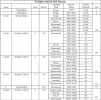


Muutamien taulukon lyhenteiden selitys (lähde: Panzer Tracts - No.1-1 Panzerkampfwagen-I (Kleintractor to Ausführung B) - Jentz, T.L. and H.L. Doyle - 2002 - sivun 1-100 "glossary"):
Kleintraktor = code name for a small tank,
Krupp-Traktor = code name for 1.Serie/La.S. chassis used for driver training,
kl.Pz.Bef.Wg. = kleiner Panzerbefehlswagen = small armored command vehicle / small command tank,
Fgst. f. Umsetz-Fahrzeug = chassis for conversion vehicle (alusta joka voitiin muuttaa Pz.Kpfw.I Ausf. B panssarivaunuksi torni asentamalla)
Fgst. f. Schulfahrzeug = chassis for a driver training vehicle / "school vehicle" (ajokoulutusversiossa ei ollut tornia eikä edes umpinaista hyttiä)
-
Panzerkampfwagen I Ausf. A / Pz.Kpfw.I Ausf. A tuotantoaikataulusta.
Lähde:
Panzer Tracts - No.1-1 Panzerkampfwagen-I (Kleintractor to Ausführung B) - Jentz, T.L. and H.L. Doyle - 2002
Lainaus kirjan sivuilta 1-60 ja 1-61.
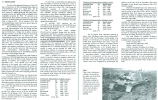
-
Panzerkampfwagen I Ausf. B / Pz.Kpfw.I Ausf. B tuotantoaikataulusta.
Lähde:
Panzer Tracts - No.1-1 Panzerkampfwagen-I (Kleintractor to Ausführung B) - Jentz, T.L. and H.L. Doyle - 2002
Lainaus kirjan sivuilta 1-87.
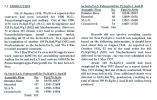
Suosittelen lukemaan edellisen viestin, jossa selitetään taulukon koostamiseen liittyneitä haasteita ja miksi tätä voi pitää kenties parhaana lähteenä Saksan 1933-1945 aikaisesta panssarivaunutuotannosta, ainakin kirjan julkaisun aikaan vuonna 2011: LINKKI aikaisempaan viestiin
Lähde:
Panzer Tracts No. 23 - Panzer Production from 1933 to 1945 (featuring Waffenamt production statistics enhanced and verified by assembly plant reports and Fgst.Nr. analysis) - Thomas L. Jentz , Hilary Louis Doyle - 2011
Taulukko löytyy kirjan sivuilta 23-8 ja 23-9.



Muutamien taulukon lyhenteiden selitys (lähde: Panzer Tracts - No.1-1 Panzerkampfwagen-I (Kleintractor to Ausführung B) - Jentz, T.L. and H.L. Doyle - 2002 - sivun 1-100 "glossary"):
Kleintraktor = code name for a small tank,
Krupp-Traktor = code name for 1.Serie/La.S. chassis used for driver training,
kl.Pz.Bef.Wg. = kleiner Panzerbefehlswagen = small armored command vehicle / small command tank,
Fgst. f. Umsetz-Fahrzeug = chassis for conversion vehicle (alusta joka voitiin muuttaa Pz.Kpfw.I Ausf. B panssarivaunuksi torni asentamalla)
Fgst. f. Schulfahrzeug = chassis for a driver training vehicle / "school vehicle" (ajokoulutusversiossa ei ollut tornia eikä edes umpinaista hyttiä)
-
Panzerkampfwagen I Ausf. A / Pz.Kpfw.I Ausf. A tuotantoaikataulusta.
Lähde:
Panzer Tracts - No.1-1 Panzerkampfwagen-I (Kleintractor to Ausführung B) - Jentz, T.L. and H.L. Doyle - 2002
Lainaus kirjan sivuilta 1-60 ja 1-61.

-
Panzerkampfwagen I Ausf. B / Pz.Kpfw.I Ausf. B tuotantoaikataulusta.
Lähde:
Panzer Tracts - No.1-1 Panzerkampfwagen-I (Kleintractor to Ausführung B) - Jentz, T.L. and H.L. Doyle - 2002
Lainaus kirjan sivuilta 1-87.

Viimeksi muokattu:
Antares
Respected Leader
Panzerkampfwagen II / Pz.Kpfw.II
Suosittelen lukemaan edellisen viestin, jossa selitetään taulukon koostamiseen liittyneitä haasteita ja miksi tätä voi pitää kenties parhaana lähteenä Saksan 1933-1945 aikaisesta panssarivaunutuotannosta, ainakin kirjan julkaisun aikaan vuonna 2011: LINKKI aikaisempaan viestiin
Lähde:
Panzer Tracts No. 23 - Panzer Production from 1933 to 1945 (featuring Waffenamt production statistics enhanced and verified by assembly plant reports and Fgst.Nr. analysis) - Thomas L. Jentz , Hilary Louis Doyle - 2011
Taulukko löytyy kirjan sivulta 23-14.
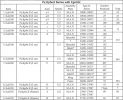
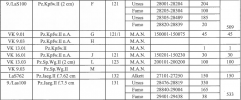
Taulukko löytyy kirjan sivulta 23-15.
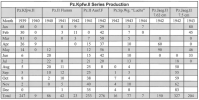
Suosittelen lukemaan edellisen viestin, jossa selitetään taulukon koostamiseen liittyneitä haasteita ja miksi tätä voi pitää kenties parhaana lähteenä Saksan 1933-1945 aikaisesta panssarivaunutuotannosta, ainakin kirjan julkaisun aikaan vuonna 2011: LINKKI aikaisempaan viestiin
Lähde:
Panzer Tracts No. 23 - Panzer Production from 1933 to 1945 (featuring Waffenamt production statistics enhanced and verified by assembly plant reports and Fgst.Nr. analysis) - Thomas L. Jentz , Hilary Louis Doyle - 2011
Taulukko löytyy kirjan sivulta 23-14.


Taulukko löytyy kirjan sivulta 23-15.

Viimeksi muokattu:
Antares
Respected Leader
Panzerkampfwagen 38(t) / Pz.Kpfw.38(t)
Suosittelen lukemaan edellisen viestin, jossa selitetään taulukon koostamiseen liittyneitä haasteita ja miksi tätä voi pitää kenties parhaana lähteenä Saksan 1933-1945 aikaisesta panssarivaunutuotannosta, ainakin kirjan julkaisun aikaan vuonna 2011: LINKKI aikaisempaan viestiin
Lähde:
Panzer Tracts No. 23 - Panzer Production from 1933 to 1945 (featuring Waffenamt production statistics enhanced and verified by assembly plant reports and Fgst.Nr. analysis) - Thomas L. Jentz , Hilary Louis Doyle - 2011
Taulukko löytyy kirjan sivulta 23-23.
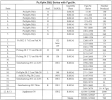
Taulukko löytyy kirjan sivulta 23-24.

Suosittelen lukemaan edellisen viestin, jossa selitetään taulukon koostamiseen liittyneitä haasteita ja miksi tätä voi pitää kenties parhaana lähteenä Saksan 1933-1945 aikaisesta panssarivaunutuotannosta, ainakin kirjan julkaisun aikaan vuonna 2011: LINKKI aikaisempaan viestiin
Lähde:
Panzer Tracts No. 23 - Panzer Production from 1933 to 1945 (featuring Waffenamt production statistics enhanced and verified by assembly plant reports and Fgst.Nr. analysis) - Thomas L. Jentz , Hilary Louis Doyle - 2011
Taulukko löytyy kirjan sivulta 23-23.

Taulukko löytyy kirjan sivulta 23-24.

Viimeksi muokattu:
Antares
Respected Leader
Jagdpanzer 38
Suosittelen lukemaan edellisen viestin, jossa selitetään taulukon koostamiseen liittyneitä haasteita ja miksi tätä voi pitää kenties parhaana lähteenä Saksan 1933-1945 aikaisesta panssarivaunutuotannosta, ainakin kirjan julkaisun aikaan vuonna 2011: LINKKI aikaisempaan viestiin
Lähde:
Panzer Tracts No. 23 - Panzer Production from 1933 to 1945 (featuring Waffenamt production statistics enhanced and verified by assembly plant reports and Fgst.Nr. analysis) - Thomas L. Jentz , Hilary Louis Doyle - 2011
Taulukko löytyy kirjan sivulta 23-31.
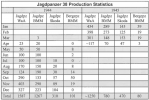
("With a few exceptions, the last complete monthly production reports are for March 1945. Therefore, in some cases issue records have been used to estimate production that occurred at the end of the War in April 1945. These estimates are identified with the "~" sign.")
Suosittelen lukemaan edellisen viestin, jossa selitetään taulukon koostamiseen liittyneitä haasteita ja miksi tätä voi pitää kenties parhaana lähteenä Saksan 1933-1945 aikaisesta panssarivaunutuotannosta, ainakin kirjan julkaisun aikaan vuonna 2011: LINKKI aikaisempaan viestiin
Lähde:
Panzer Tracts No. 23 - Panzer Production from 1933 to 1945 (featuring Waffenamt production statistics enhanced and verified by assembly plant reports and Fgst.Nr. analysis) - Thomas L. Jentz , Hilary Louis Doyle - 2011
Taulukko löytyy kirjan sivulta 23-31.

("With a few exceptions, the last complete monthly production reports are for March 1945. Therefore, in some cases issue records have been used to estimate production that occurred at the end of the War in April 1945. These estimates are identified with the "~" sign.")
Viimeksi muokattu:
Antares
Respected Leader
Panzerkampfwagen III / Pz.Kpfw.III
Suosittelen lukemaan edellisen viestin, jossa selitetään taulukon koostamiseen liittyneitä haasteita ja miksi tätä voi pitää kenties parhaana lähteenä Saksan 1933-1945 aikaisesta panssarivaunutuotannosta, ainakin kirjan julkaisun aikaan vuonna 2011: LINKKI aikaisempaan viestiin
Lähde:
Panzer Tracts No. 23 - Panzer Production from 1933 to 1945 (featuring Waffenamt production statistics enhanced and verified by assembly plant reports and Fgst.Nr. analysis) - Thomas L. Jentz , Hilary Louis Doyle - 2011
Taulukko löytyy kirjan sivuilta 23-32 ja 23-33.
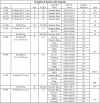

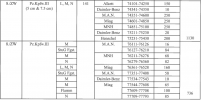
Taulukko löytyy kirjan sivulta 23-34.

Suosittelen lukemaan edellisen viestin, jossa selitetään taulukon koostamiseen liittyneitä haasteita ja miksi tätä voi pitää kenties parhaana lähteenä Saksan 1933-1945 aikaisesta panssarivaunutuotannosta, ainakin kirjan julkaisun aikaan vuonna 2011: LINKKI aikaisempaan viestiin
Lähde:
Panzer Tracts No. 23 - Panzer Production from 1933 to 1945 (featuring Waffenamt production statistics enhanced and verified by assembly plant reports and Fgst.Nr. analysis) - Thomas L. Jentz , Hilary Louis Doyle - 2011
Taulukko löytyy kirjan sivuilta 23-32 ja 23-33.



Taulukko löytyy kirjan sivulta 23-34.

Viimeksi muokattu:
Antares
Respected Leader
Sturmgeschuetz
Suosittelen lukemaan edellisen viestin, jossa selitetään taulukon koostamiseen liittyneitä haasteita ja miksi tätä voi pitää kenties parhaana lähteenä Saksan 1933-1945 aikaisesta panssarivaunutuotannosta, ainakin kirjan julkaisun aikaan vuonna 2011: LINKKI aikaisempaan viestiin
Lähde:
Panzer Tracts No. 23 - Panzer Production from 1933 to 1945 (featuring Waffenamt production statistics enhanced and verified by assembly plant reports and Fgst.Nr. analysis) - Thomas L. Jentz , Hilary Louis Doyle - 2011
Taulukko löytyy kirjan sivulta 23-44.
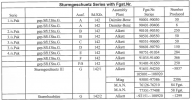
("With a few exceptions, the last complete monthly production reports are for March 1945. Therefore, in some cases issue records have been used to estimate production that occurred at the end of the War in April 1945. These estimates are identified with the "~" sign.")
-
Taulukko löytyy kirjan sivulta 23-44.
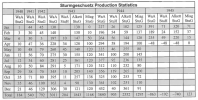
("With a few exceptions, the last complete monthly production reports are for March 1945. Therefore, in some cases issue records have been used to estimate production that occurred at the end of the War in April 1945. These estimates are identified with the "~" sign.")
Suosittelen lukemaan edellisen viestin, jossa selitetään taulukon koostamiseen liittyneitä haasteita ja miksi tätä voi pitää kenties parhaana lähteenä Saksan 1933-1945 aikaisesta panssarivaunutuotannosta, ainakin kirjan julkaisun aikaan vuonna 2011: LINKKI aikaisempaan viestiin
Lähde:
Panzer Tracts No. 23 - Panzer Production from 1933 to 1945 (featuring Waffenamt production statistics enhanced and verified by assembly plant reports and Fgst.Nr. analysis) - Thomas L. Jentz , Hilary Louis Doyle - 2011
Taulukko löytyy kirjan sivulta 23-44.

("With a few exceptions, the last complete monthly production reports are for March 1945. Therefore, in some cases issue records have been used to estimate production that occurred at the end of the War in April 1945. These estimates are identified with the "~" sign.")
-
Taulukko löytyy kirjan sivulta 23-44.

("With a few exceptions, the last complete monthly production reports are for March 1945. Therefore, in some cases issue records have been used to estimate production that occurred at the end of the War in April 1945. These estimates are identified with the "~" sign.")
Viimeksi muokattu:


